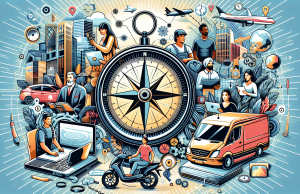In the labyrinth of the modern workplace, the role of Human Resources (HR) is more pivotal than ever. This department, often seen as the custodian of organizational decorum, is tasked with navigating the complex web of HR compliance – a web that is woven with ever-evolving laws, nuanced employee rights, and the intricate dynamics of the contemporary work environment.
At the heart of this challenge is the notion that compliance is not merely a checklist or a set of static requirements; it is a living, breathing entity that demands constant vigilance, adaptation, and foresight. In this blog, we will peel back the layers of the ‘invisible red tape’ that often bind and constrain HR professionals, shedding light on the hidden hurdles they face in their commitment to uphold the integrity and legal standing of their organizations.
The first layer is the increasing pace of legislative changes. In a world where the only constant is change, laws that govern the workplace are frequently updated to reflect new societal norms and needs. HR professionals must stay abreast of these changes, understand them thoroughly, and implement them promptly to avoid legal pitfalls. Even the most well-intentioned companies can find themselves on the wrong side of the law simply due to an inability to keep up with the rapid regulatory turnover.
Another significant strand in the red tape is the rise of remote and hybrid work environments. The COVID-19 pandemic has irreversibly altered the landscape of work, and with it, the scope of HR compliance has expanded exponentially. HR now must ensure compliance across state lines and even international borders, grappling with a patchwork of labor laws that were designed for a pre-digital age. This has introduced new complexities in terms of tax laws, work hours, data protection, and employee wellbeing.
As we delve deeper, we encounter the often-underestimated specter of cultural compliance. It’s not enough for HR to simply implement policies; they must embed them into the very fabric of the organizational culture. This means fostering an environment where diversity is celebrated, harassment is unequivocally addressed, and inclusion is more than a buzzword. The ‘invisible’ part of this challenge lies in the subtle biases and unwritten codes of behavior that can undermine even the most comprehensive compliance policies.
Finally, there is technological compliance – the silent behemoth of the digital age. With the advent of artificial intelligence, machine learning, and a myriad of HR tech tools, companies must navigate the delicate balance between technological advancement and ethical use of employee data. Privacy concerns, cybersecurity threats, and the potential for inadvertent discrimination through algorithmic decision-making add layers of complexity to an already intricate compliance landscape.
In conclusion, the invisible red tape of HR compliance in the modern workplace is not a barrier to be despised but a dynamic puzzle to be solved. It demands a blend of legal expertise, ethical consideration, and strategic HR management. As companies continue to evolve in this ever-changing world, their success will be partly defined by their ability to untangle and address these unseen challenges. By bringing these issues into the light, we not only inform and empower HR professionals but also contribute to the creation of fairer, more equitable workplaces for all.
HR compliance is indeed a silent sentinel in the world of work, its importance as unassuming as it is foundational. As we look to the horizon of the future of work, let the discourse around these challenges be vigorous and the pursuit of solutions relentless. The integrity of our workplaces – and the wellbeing of our workforce – depend on it.

























